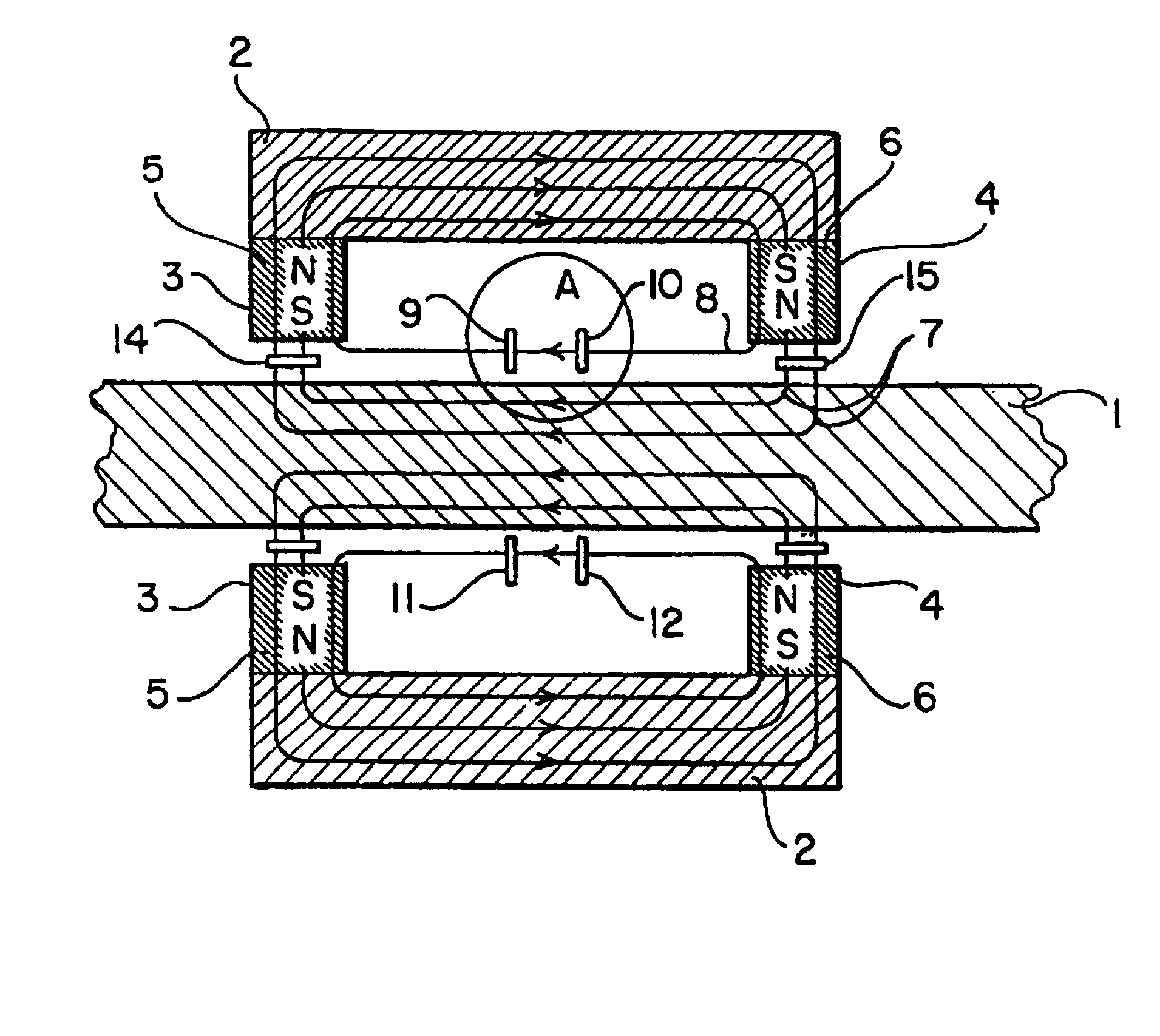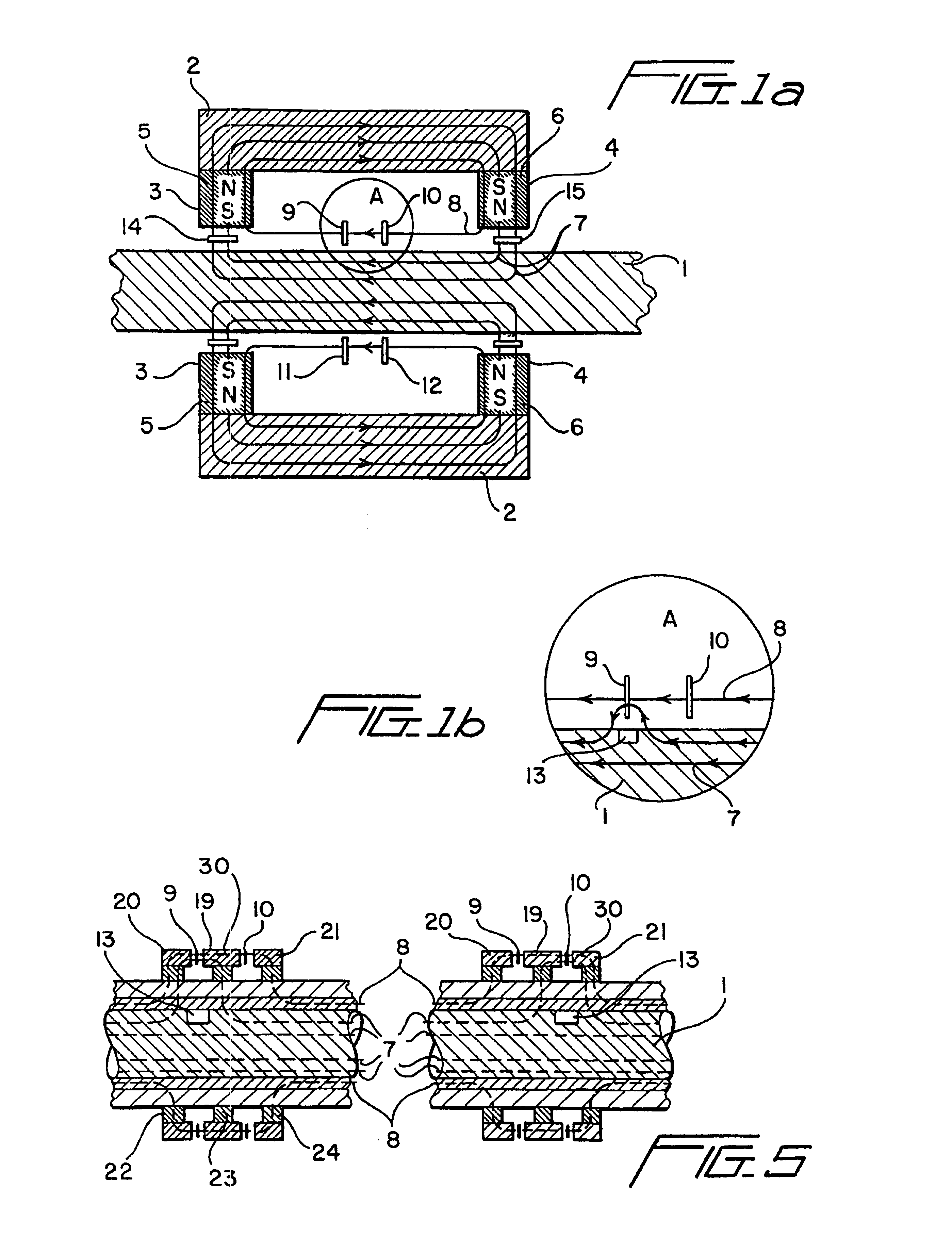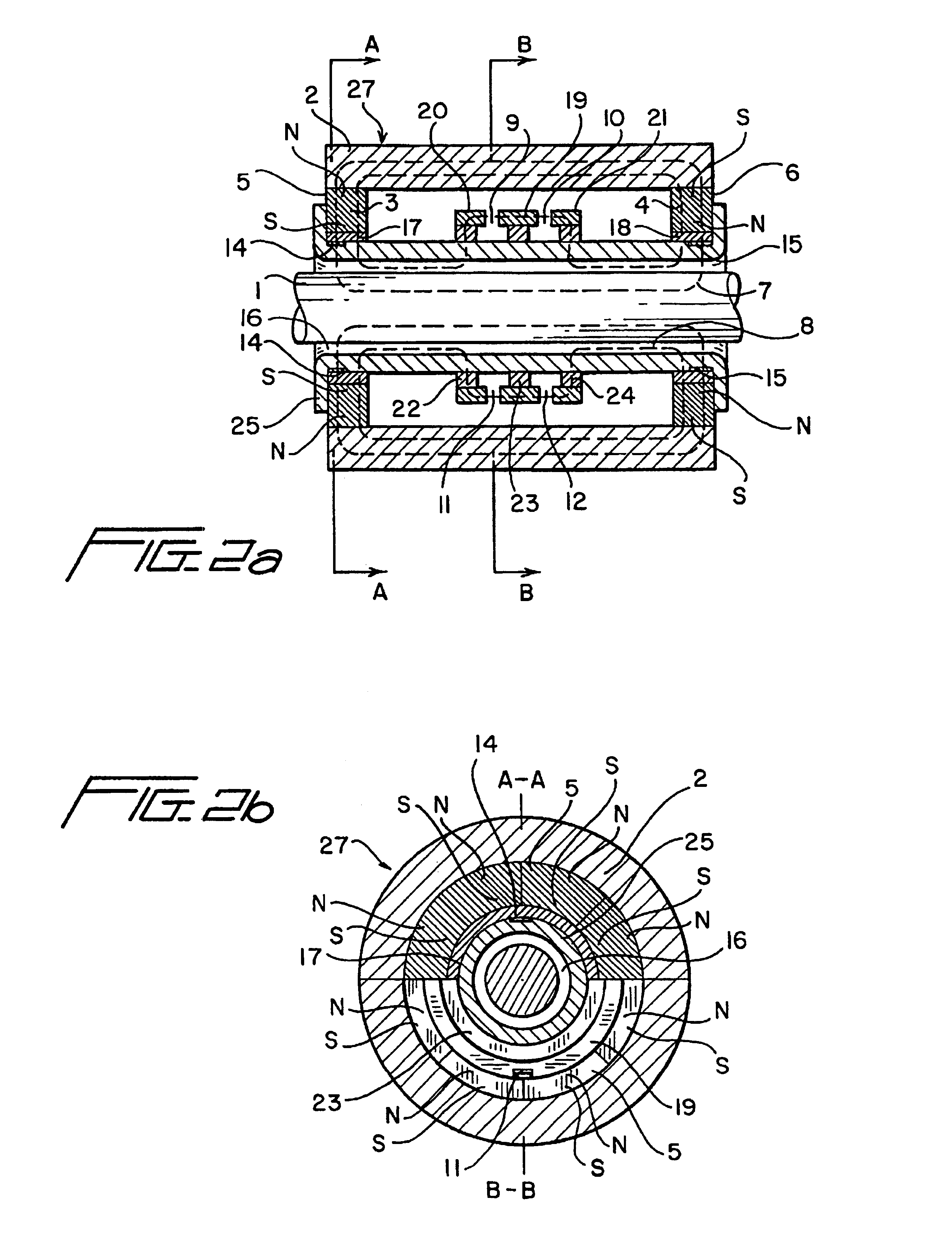Magnetic non-destructive method and apparatus for measurement of cross sectional area and detection of local flaws in elongated ferrous objects in response to longitudinally spaced sensors in an inter-pole area
a technology of elongated ferrous objects and cross sectional area, which is applied in the direction of measuring devices, instruments, and material analysis by electric/magnetic means, can solve the problems of increasing the magnetic flux density in the inter-pole area, lma measurement error, and reducing the influence of temperature variation on the magnetizing device, so as to increase the accuracy of cross sectional area measurement and local flaw detection, and increase the reliability of lf detecting
- Summary
- Abstract
- Description
- Claims
- Application Information
AI Technical Summary
Benefits of technology
Problems solved by technology
Method used
Image
Examples
Embodiment Construction
[0028]The present description is set forth in terms of the magnetic non-destructive measurement of a cross-sectional area of an elongated ferrous object such as a steel rod, tube, wire or wire rope. It is understood the cross section of these structures can define a circular, curvilinear, rectangular, triangular, or faceted profile. For purposes of description the term “rope” or “wire rope” shall be understood to encompass each of these structures. Since NDT of steel ropes in use is an actual problem, this particular case is set forth in an exemplary manner below.
[0029]Referring to FIG. 1, the magnetic flux through a rope 1 under test is provided by a magnetizing device 40 having a magnetic core 2 with spaced apart poles 3, 4 on the ends adjacent to and facing the rope 1. The poles 3, 4 are spaced along the longitudinal axis of the rope 1. The spaced apart poles 3, 4 thereby define an inter-pole area (or length) extending parallel to the longitudinal axis between the longitudinally ...
PUM
| Property | Measurement | Unit |
|---|---|---|
| distance | aaaaa | aaaaa |
| magnetic | aaaaa | aaaaa |
| magnetic field | aaaaa | aaaaa |
Abstract
Description
Claims
Application Information
 Login to View More
Login to View More - R&D
- Intellectual Property
- Life Sciences
- Materials
- Tech Scout
- Unparalleled Data Quality
- Higher Quality Content
- 60% Fewer Hallucinations
Browse by: Latest US Patents, China's latest patents, Technical Efficacy Thesaurus, Application Domain, Technology Topic, Popular Technical Reports.
© 2025 PatSnap. All rights reserved.Legal|Privacy policy|Modern Slavery Act Transparency Statement|Sitemap|About US| Contact US: help@patsnap.com



